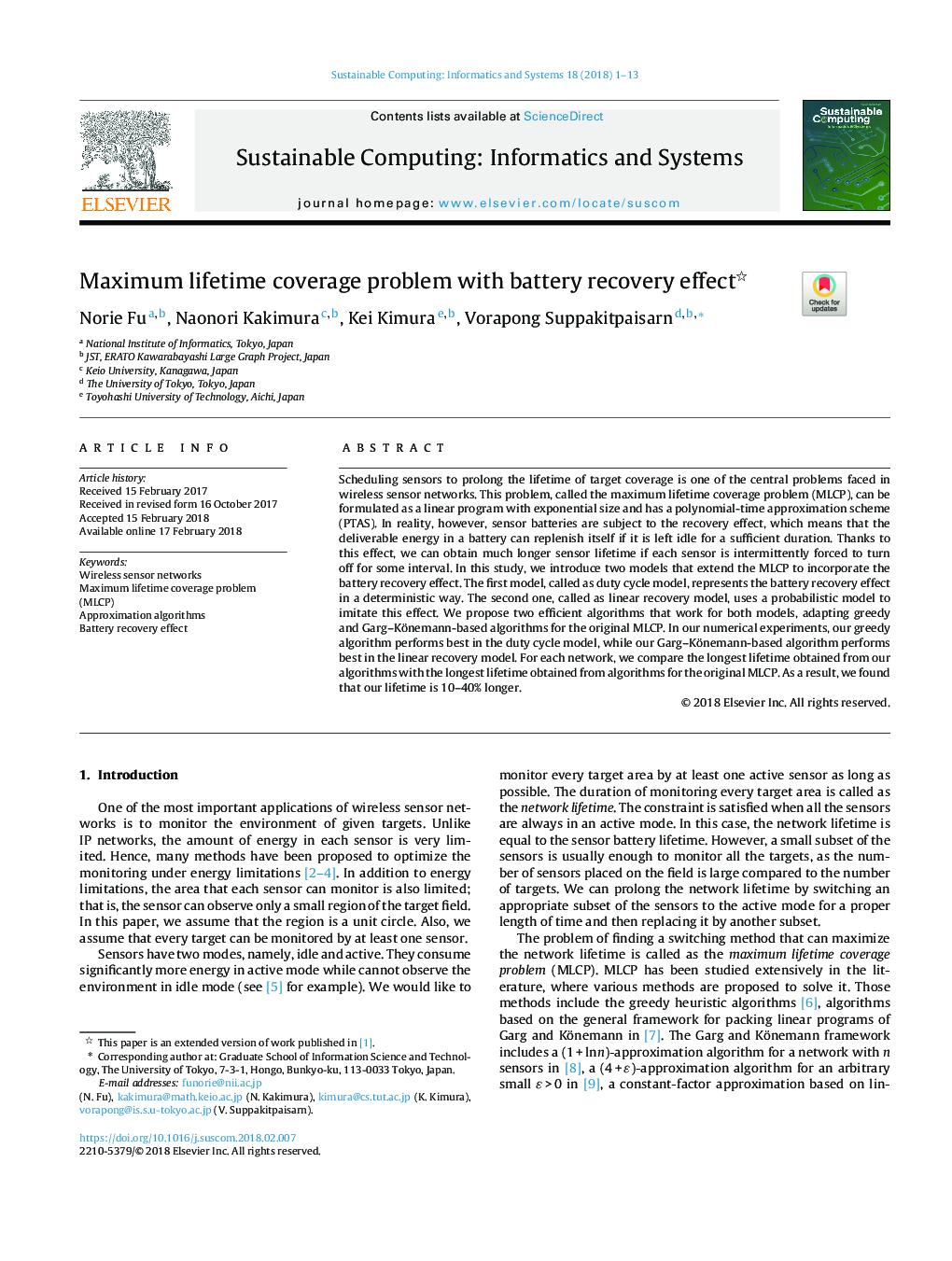| Article ID | Journal | Published Year | Pages | File Type |
|---|---|---|---|---|
| 6902992 | Sustainable Computing: Informatics and Systems | 2018 | 13 Pages |
Abstract
Scheduling sensors to prolong the lifetime of target coverage is one of the central problems faced in wireless sensor networks. This problem, called the maximum lifetime coverage problem (MLCP), can be formulated as a linear program with exponential size and has a polynomial-time approximation scheme (PTAS). In reality, however, sensor batteries are subject to the recovery effect, which means that the deliverable energy in a battery can replenish itself if it is left idle for a sufficient duration. Thanks to this effect, we can obtain much longer sensor lifetime if each sensor is intermittently forced to turn off for some interval. In this study, we introduce two models that extend the MLCP to incorporate the battery recovery effect. The first model, called as duty cycle model, represents the battery recovery effect in a deterministic way. The second one, called as linear recovery model, uses a probabilistic model to imitate this effect. We propose two efficient algorithms that work for both models, adapting greedy and Garg-Könemann-based algorithms for the original MLCP. In our numerical experiments, our greedy algorithm performs best in the duty cycle model, while our Garg-Könemann-based algorithm performs best in the linear recovery model. For each network, we compare the longest lifetime obtained from our algorithms with the longest lifetime obtained from algorithms for the original MLCP. As a result, we found that our lifetime is 10-40% longer.
Related Topics
Physical Sciences and Engineering
Computer Science
Computer Science (General)
Authors
Norie Fu, Naonori Kakimura, Kei Kimura, Vorapong Suppakitpaisarn,
